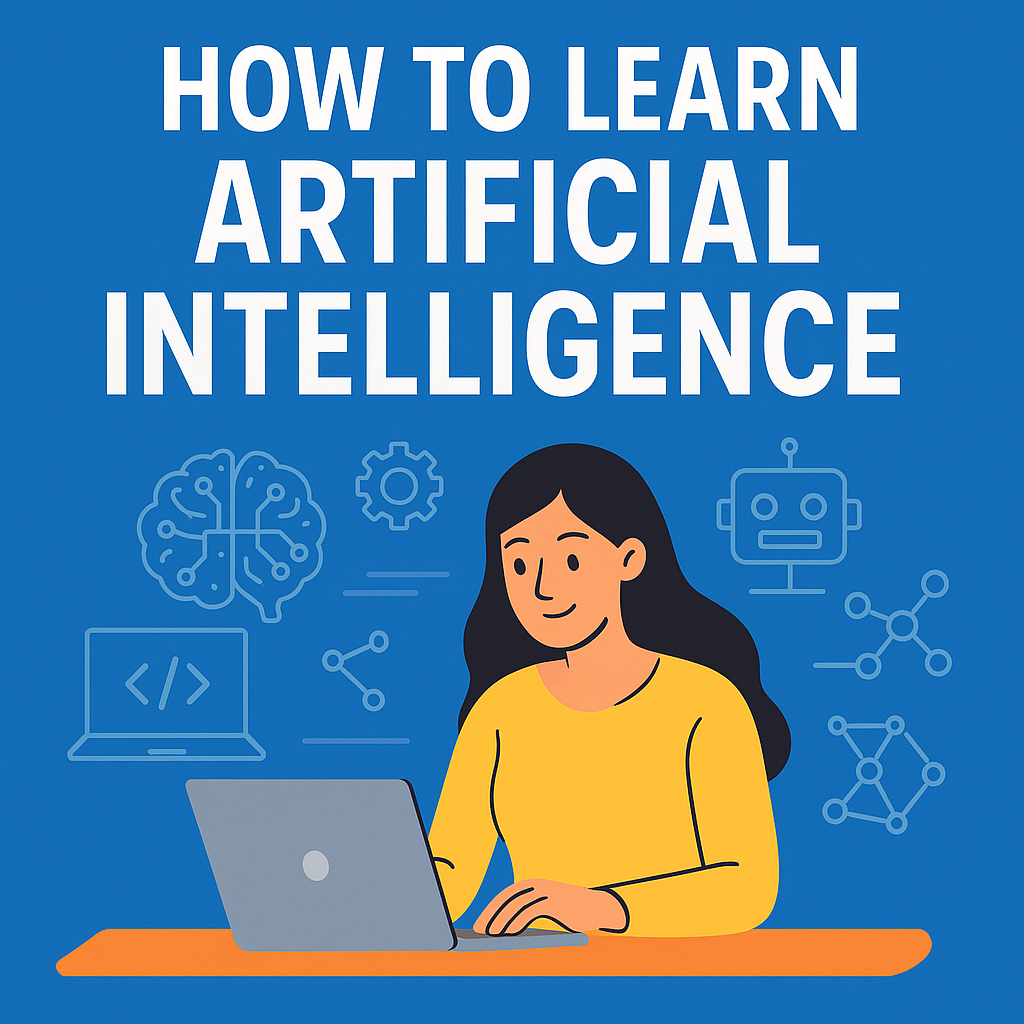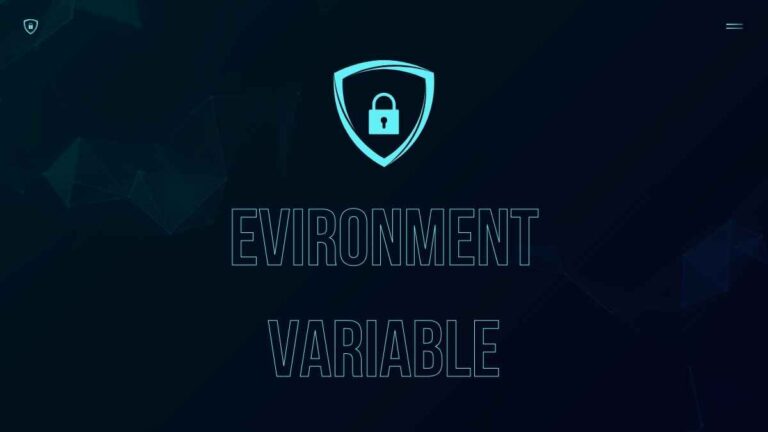Artificial intelligence (AI) is already all around us. Every time you search on Google, get movie suggestions on Netflix, or use a smart assistant like Alexa, you’re interacting with AI. If you’re wondering how to learn artificial intelligence, know that it’s not stopping there—AI is growing fast and changing how we live and work.
Whether you’re a student, a professional thinking about a career switch, or just curious about how to learn artificial intelligence, it can open up amazing opportunities. Plus, there’s a high demand for AI skills across industries. The good news? You don’t need to be a tech genius to get started. With the right approach and a little dedication, anyone can learn AI. Let’s break it down step-by-step.
Beginner-Friendly AI Courses to Get Started
If you want to jumpstart your journey, there are some fantastic beginner courses you can check out:
- AI for Everyone (DeepLearning.AI):
In just six hours, you’ll understand what AI is, how AI projects work, and the social impact of AI. This course is designed for non-technical people too! - Google’s AI Essentials:
Learn how to use AI tools to generate ideas, speed up tasks, and make smarter decisions in everyday work.
Both courses are self-paced, so you can learn whenever it fits your schedule.
What is Artificial Intelligence, and Why Should You Learn It?
Artificial Intelligence is the science of making machines think and act like humans. It involves tasks like recognizing speech, solving problems, learning from experience, and even understanding human emotions.
If you’re looking to understand how to learn artificial intelligence, it’s essential to grasp the basics before diving deeper.
As you explore how to learn artificial intelligence, remember that practical applications in fields like health care, finance, and more will enhance your understanding.
AI is becoming a part of every major industry: health care, finance, retail, transportation, and more. It’s helping doctors diagnose diseases, helping banks detect fraud, and making customer service faster with chatbots.
So, if you’re ready to learn AI, let’s discuss how to learn artificial intelligence in a structured way.
Besides being fascinating, AI also offers strong career opportunities. The US Bureau of Labor Statistics reports that AI engineers earn a median salary of around $136,620 per year. Plus, the AI field is expected to grow by 23% over the next decade—much faster than most careers.
Learning AI isn’t just about landing a great job. It’s also about understanding the technology that’s shaping our future.
How Long Does It Take to Learn AI?
The time it takes to learn AI really depends on a few factors:
- What you already know: If you have a good grasp of math and statistics, you’ll pick things up faster.
- Your goals: If you want to become an AI engineer, you’ll need a deeper education compared to someone who just wants to understand AI basics.
- Your background: If you’re coming from a technical field, it might be easier to adapt compared to starting from scratch.
In general, with consistent study (around 10-15 hours per week), you could start applying beginner AI skills within 6 to 9 months.
When considering how to learn artificial intelligence, factor in your existing skills to determine the best starting point.
AI vs. Machine Learning: What’s the Difference?
People often mix up AI and machine learning (ML). Here’s a simple way to look at it:
- Artificial Intelligence is the bigger concept—machines that mimic human intelligence.
- Machine Learning is a subset of AI—machines that learn from data without being explicitly programmed.
In short, all machine learning is AI, but not all AI is machine learning.
These resources can guide you on how to learn artificial intelligence step-by-step.
Once you grasp the basics, you might wonder how to learn artificial intelligence effectively and efficiently.
How to Start Learning Artificial Intelligence
Ready to dive in? Here’s a four-step roadmap to guide you:
1. Create a Learning Plan
Before you jump into courses or books, take some time to plan:
- Your current skill level: Are you starting fresh, or do you have some math, programming, or data analysis experience?
- Your goal: Are you aiming for a career switch, skill enhancement, or just personal curiosity?
- Time commitment: Will you study full-time, part-time, or just a few hours a week?
- Budget: Are you ready to invest in courses or planning to stick with free resources?
- Learning style: Do you prefer structured classes, YouTube tutorials, self-paced courses, or bootcamps?
Mapping this out will keep you focused and motivated.
2. Master the Basics First
Before diving into AI-specific topics, you’ll need a solid foundation:
- Basic Statistics:
Learn concepts like averages, probability, regression, and statistical significance. Statistics help AI systems make sense of data. - Basic Math:
Focus on algebra, linear algebra, calculus, and probability. These are key in understanding AI algorithms. - Curiosity and Adaptability:
AI is a rapidly evolving field. Staying curious and flexible will help you keep learning new tools and trends.
You don’t need a PhD in math—basic understanding is enough to start.
3. Start Building AI Skills
Once your foundation is strong, move into core AI topics:
Programming:
Python is the most popular programming language for AI. It’s beginner-friendly and widely used in AI projects. Learn Python basics, and then dive into libraries like NumPy, Pandas, and TensorFlow.
Data Structures:
Understanding how data is organized (like arrays, lists, trees) helps you design better algorithms and work efficiently with large data sets.
Data Science:
AI professionals need strong data science skills. Learn how to collect, clean, analyze, and visualize data to find meaningful patterns.
Machine Learning:
Get familiar with different types of ML—like supervised learning (predicting future outcomes) and unsupervised learning (finding hidden patterns). You’ll also learn about popular algorithms like decision trees and neural networks.
Deep Learning:
This is a specialized form of machine learning using neural networks with many layers. It powers technologies like voice recognition and self-driving cars.
4. Get Hands-On with AI Tools and Libraries
Knowing how to use AI tools is crucial. Some must-know libraries (especially for Python learners) include:
- TensorFlow
- Keras
- Scikit-learn
- PyTorch
- Pandas
- NumPy
- Matplotlib
These libraries simplify complex AI tasks, like building a model or visualizing data.
Spend time practicing with them by doing small projects, like creating a chatbot, building a recommendation system, or predicting house prices.
Sample Learning Plan (9-Month Timeline)
Here’s a rough guide to how you could structure your learning:
Months 1-3: Foundation Building
- Focus on basic math (algebra, probability) and statistics.
- Learn a programming language (Python recommended).
- Start with data structures and simple algorithms.
Months 4-6: AI Core Skills
If you’re still unsure about how to learn artificial intelligence, consider joining a community of learners.
In conclusion, by understanding how to learn artificial intelligence, you’ll be better prepared for the future.
- Dive into data science fundamentals.
- Start exploring machine learning techniques.
- Get hands-on with small ML projects.
Months 7-9: Specialization and Practice
- Learn about deep learning and neural networks.
- Get comfortable with AI libraries like TensorFlow and PyTorch.
- Choose a specialization like computer vision, natural language processing, or robotics.
- Start working on larger projects or portfolio pieces.
- If job hunting, start preparing your resume and LinkedIn profile!

Final Thoughts
Learning AI is an exciting and rewarding journey. You don’t have to be a math wizard or a coding expert to start—you just need curiosity, dedication, and a learning plan.
By understanding how to learn artificial intelligence, you’ll be better prepared for the future. Spend time practicing with them by doing small projects, like creating a chatbot, building a recommendation system, or predicting house prices. Here’s a rough guide to how you could structure your learning: Months 1-3 for Foundation Building, Months 4-6 for AI Core Skills, and Months 7-9 for Specialization and Practice. Consider joining a community of learners if you’re still unsure about how to learn artificial intelligence.




